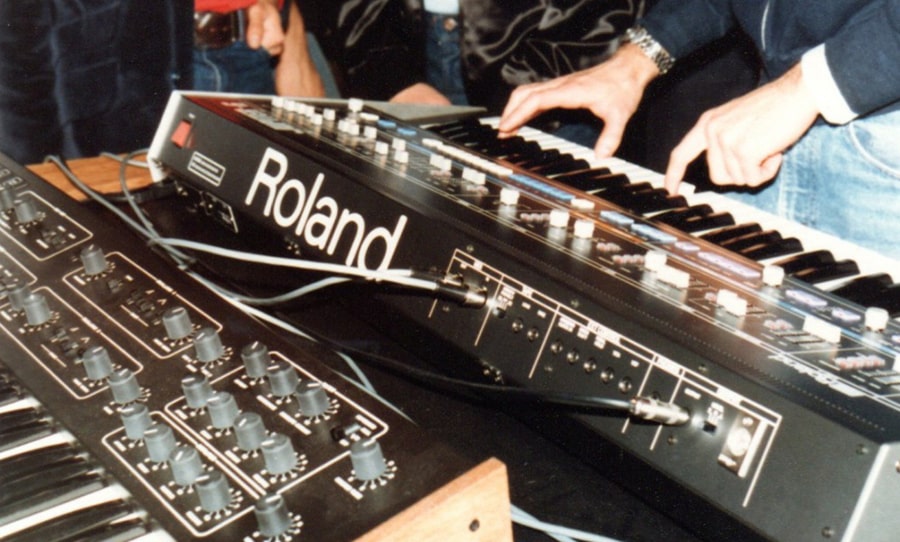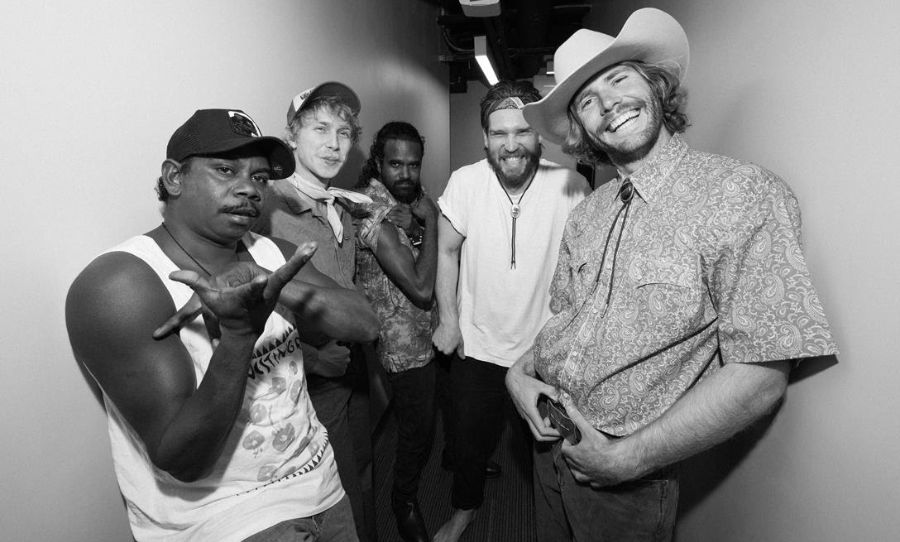Passing away this April, Japanese audio pioneer Ikutaro Kakehashi left behind him a staggering legacy of classic musical inventions and technological advancements. The man behind Roland Corp. made not only landmarks in electronic instrumentation but also helped to develop the universal landscape for music production as we know it.
As someone with no formal musical training, Kakehashi was intent on making musical instruments for those like himself. He built his first machine at the age of 28, a small monophonic organ that any non-musician could use.
This principle of accessibility later became instrumental to the sprawling success of Roland. From the iconic TR rhythm machines to MIDI technology, the following is a celebration of Roland and Kakehashi’s topmost contributions to the world of music production.
From a revolution of rhythm to the popularisation of synths, sequencers and guitars pedals, we take a look at the astounding legacy of Roland founder Ikutaro Kakehashi.
Rhythmic Revolutions
The market of drum machines might be a mere shadow if not for Roland. They first struck gold in 1980 with the TR-808, one of if not the most influential rhythm composer in pop music. Then, in 1983 Roland did it again with the legendary TR-909 that essentially invented dance music itself.
But before either of these, there was the CR-78. The ‘CompuRhythm’ was a momentous advancement in drum machine technology insofar as it enabled programming and storage of original drum patterns. For that it became a must-have for every type of musician in the late ‘70s/early ‘80s and grounded iconic tracks like In the Air Tonight by Phil Collins and Blondie’s Heart of Glass.
Roland’s genius in the field of drum machines can be traced all the way back to Ikutaro Kakehashi’s Rhythm Ace FR-1 (1976), under his first enterprise Ace Electronics. The FR-1 was Kakehashi’s first commercialised product ever and utilised his patented preset rhythm pattern technology. Such was its success that it spawned collaboration with the Hammond Organ Company for the latter’s models the year after.
Synth Supremes
Not only did Roland raise the bar for drum machines, they also set the standard for a variety of synthesisers, chief among these being the one and only TB-303, which defined acid house.
After the 303, Roland made a breakthrough with keyboard synthesisers in the form of the D-50 (1987), widely considered the first virtual analog synth and the first digital synth with on-board effects. On the merits of its “Linear Arithmetic synthesis,” the D-50 nabbed a TEC Award for outstanding tech achievement in 1988.
Roland continued to dominate the world of digital synthesis into the ‘90s thanks to the JP-8000 (1996). This synth is noteworthy for commercialising the “supersaw” sound we all know and some of us love.
As the latter would appreciate, the supersaw is comprised of a series of detuned sawtooth waves. It was a big deal in late 90s trance, and an even bigger deal in modern pop/EDM, meaning that altogether Roland has been governing dance music for over three decades.
The Micro-Composer: Making Strides in Sequencing
While Roland’s MC-8 wasn’t the first digital sequencer ever, it might have been the most important one. Capitalising on an idea from a Canadian called Ralph Dyck for a one-circuit sequencer with a 10-key calculator keyboard, Ikutaro Kakehashi proved his knack for innovation by manufacturing it from 1976 when no US company would. But while Dyck’s original model allowed for a maximum of 1024 notes, Kakehashi improved on it with the inclusion of more memory, eight channels (with gate outputs for all), and a then-revolutionary 8080A microprocessor.
Other then-groundbreaking features of the MC-8 included a copy-and-paste function (it was one of the first sequencers to allow this!), programmable tempo, real-time display of minutes/seconds, and a “total time” button via which one could recalculate a song’s length at will down to the tenth of a second.
Consequently, despite the archaic programming of numeric entry for each note, the MC-8 became quite the prize for film composers like Hans Zimmer (who alone used three for his modular systems). And with its MC-4 sequel (1981), the Micro-Composer also played its part in launching ‘80s synth-pop through the likes of Depeche Mode and Vince Clarke.
The Boss of Guitar Effects
Not content with merely ruling drum machines, synths, and sequencers Ikutaro Kakehashi also decided to secure a foothold in the world of guitars with Roland’s BOSS division. Its first big influence on music came with the CE-1 chorus pedal in 1976, which kicked off the trend of separate chorus/vibrato effects embraced by late ‘70s prog-rock keyboardists and jazz fusion guitarists. Genesis and Supertramp were one of many names to first popularise this sound.
BOSS also proved popular among harder rockers starting with the OD-1 (1977), which was one of the first overdrive pedals released and a staple in ‘80s LA and Japanese metal, thanks to Roland’s patented asymmetrical clipping that produced a certain sonic “edginess”.
They later amped things up further with the HM-2, aka the “heavy metal pedal,” made initially from 1983 in Japan and then from 1988 in Taiwan. This beast gained a reputation as the “Swedish chainsaw” for its influence in death metal, on account of its aggressively distorted low end.
MIDI: A Timeless Interface
Of all of Ikutaro Kakehashi’s triumphs, standardizing the digital interface for music composition is his real crowning glory. After a failed attempt in 1981 to collaborate with Tom Oberheim for this purpose, Kakehashi found a true business partner in Dave Smith, head of Sequential Circuits. Having the same goal in mind, Smith himself had been making attempts from 1982 to gather US manufacturers but received interest only from Japanese companies—one of these being Roland.
And so the technology known as MIDI (for Musical Instrument Digital Interface) was brought into being (although Ikutaro Kakehashi initially preferred it to be called UMI for Universal Musical Interface). It was finished in January of 1983 and then showcased for the first time at that year’s NAMM show.
Demonstration of the tech was carried out with an appropriate collaboration of a Sequential Circuits Prophet 600 and Roland’s own brand new Jupiter-6, fitted with basic MIDI capabilities. According to John Bowen, Sequential’s sound designer at the time, Roland’s representatives brought in their instrument with much pomp and circumstance, carrying it “over their heads, like a sacrifice!”
MIDI was embraced by one and all, especially after the release of the good old TR-909 – the first ever MIDI drum machine. (Elsewhere for Roland, both the 303 and 808 had been designed with DIN-5 connectors for easier enabling, and 1984’s Juno 106 would be their first analog synthesiser with complete MIDI implementation.)
Following this was Yamaha’s hugely popular DX-7 (late 1983). But MIDI really cemented itself through its arrival on computers (including Apple Mac, Atari ST, and PC DOS, among others), enabling a whole new platform for music production.
Remarkably, MIDI is still the universal interface to this day, to the extent it’s impossible to imagine life without it. For their innovation, Smith and Kakehashi earned a technical Grammy award in 2013, marking the 30th anniversary of the technology.



